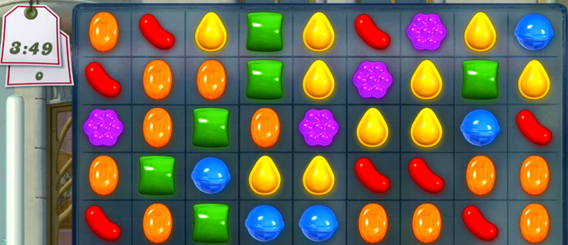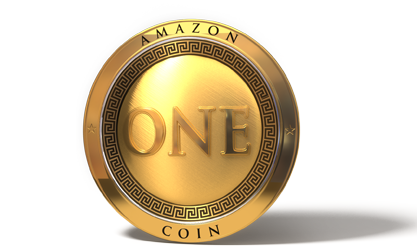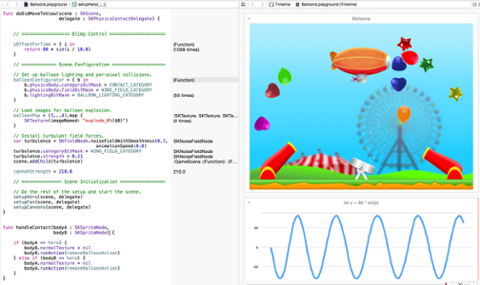 "Candy Crush Saga."[/caption] It was a good year to be a mobile-game developer for iOS. Apple’s freshly released list of 2013’s bestselling apps is overwhelmingly loaded with games, with “Candy Crush Saga” in the number-one position on the Top Free and Top Grossing countdowns; “Minecraft,” “Temple Run: Oz,” “Angry Birds,” “Clash of Clans,” and others made the lists. Non-gaming apps on the Top Free list included Vine, Google Maps, Snapchat, Instagram, Facebook, and Pandora Radio; Pandora Radio also made number three on Apple’s Top Grossing list. So what can your average developer learn from these latest stats? First, that games will remain immensely popular for the foreseeable future—and that the emphasis is on casual playthings, as opposed to the increasingly sophisticated, more expensive games starting to creep onto iOS (such as “Xcom: Enemy Unknown”). Second, apps to communicate and share—Snapchat, Vine, Facebook, and Instagram—likewise remain popular, largely because their functionality dovetails neatly with why people buy mobile devices in the first place. (That’s also why Google Maps ranks so highly on the Top Free list—smartphones have effectively replaced paper maps and dedicated devices such as TomToms). Third, major developers dominate the lists of most-popular apps. That shouldn’t—and almost certainly won’t—discourage indie developers from building products for iOS, but the crowd of big players could make it that much harder for a small shop to hit a epic home run with its humble communications app or side-scrolling shooter. One of the smaller firms on the list—Mojang, which created Minecraft—made a significant name for itself in PC gaming, which gave it a somewhat-unusual advantage when entering the iOS ecosystem. But other tiny outfits may need to content themselves with midlist status, unless some bit of unique functionality allows them to go viral. Image: King.com
"Candy Crush Saga."[/caption] It was a good year to be a mobile-game developer for iOS. Apple’s freshly released list of 2013’s bestselling apps is overwhelmingly loaded with games, with “Candy Crush Saga” in the number-one position on the Top Free and Top Grossing countdowns; “Minecraft,” “Temple Run: Oz,” “Angry Birds,” “Clash of Clans,” and others made the lists. Non-gaming apps on the Top Free list included Vine, Google Maps, Snapchat, Instagram, Facebook, and Pandora Radio; Pandora Radio also made number three on Apple’s Top Grossing list. So what can your average developer learn from these latest stats? First, that games will remain immensely popular for the foreseeable future—and that the emphasis is on casual playthings, as opposed to the increasingly sophisticated, more expensive games starting to creep onto iOS (such as “Xcom: Enemy Unknown”). Second, apps to communicate and share—Snapchat, Vine, Facebook, and Instagram—likewise remain popular, largely because their functionality dovetails neatly with why people buy mobile devices in the first place. (That’s also why Google Maps ranks so highly on the Top Free list—smartphones have effectively replaced paper maps and dedicated devices such as TomToms). Third, major developers dominate the lists of most-popular apps. That shouldn’t—and almost certainly won’t—discourage indie developers from building products for iOS, but the crowd of big players could make it that much harder for a small shop to hit a epic home run with its humble communications app or side-scrolling shooter. One of the smaller firms on the list—Mojang, which created Minecraft—made a significant name for itself in PC gaming, which gave it a somewhat-unusual advantage when entering the iOS ecosystem. But other tiny outfits may need to content themselves with midlist status, unless some bit of unique functionality allows them to go viral. Image: King.com Games Dominated Apple’s Bestselling Apps of 2013
[caption id="attachment_15271" align="aligncenter" width="568"]  "Candy Crush Saga."[/caption] It was a good year to be a mobile-game developer for iOS. Apple’s freshly released list of 2013’s bestselling apps is overwhelmingly loaded with games, with “Candy Crush Saga” in the number-one position on the Top Free and Top Grossing countdowns; “Minecraft,” “Temple Run: Oz,” “Angry Birds,” “Clash of Clans,” and others made the lists. Non-gaming apps on the Top Free list included Vine, Google Maps, Snapchat, Instagram, Facebook, and Pandora Radio; Pandora Radio also made number three on Apple’s Top Grossing list. So what can your average developer learn from these latest stats? First, that games will remain immensely popular for the foreseeable future—and that the emphasis is on casual playthings, as opposed to the increasingly sophisticated, more expensive games starting to creep onto iOS (such as “Xcom: Enemy Unknown”). Second, apps to communicate and share—Snapchat, Vine, Facebook, and Instagram—likewise remain popular, largely because their functionality dovetails neatly with why people buy mobile devices in the first place. (That’s also why Google Maps ranks so highly on the Top Free list—smartphones have effectively replaced paper maps and dedicated devices such as TomToms). Third, major developers dominate the lists of most-popular apps. That shouldn’t—and almost certainly won’t—discourage indie developers from building products for iOS, but the crowd of big players could make it that much harder for a small shop to hit a epic home run with its humble communications app or side-scrolling shooter. One of the smaller firms on the list—Mojang, which created Minecraft—made a significant name for itself in PC gaming, which gave it a somewhat-unusual advantage when entering the iOS ecosystem. But other tiny outfits may need to content themselves with midlist status, unless some bit of unique functionality allows them to go viral. Image: King.com
"Candy Crush Saga."[/caption] It was a good year to be a mobile-game developer for iOS. Apple’s freshly released list of 2013’s bestselling apps is overwhelmingly loaded with games, with “Candy Crush Saga” in the number-one position on the Top Free and Top Grossing countdowns; “Minecraft,” “Temple Run: Oz,” “Angry Birds,” “Clash of Clans,” and others made the lists. Non-gaming apps on the Top Free list included Vine, Google Maps, Snapchat, Instagram, Facebook, and Pandora Radio; Pandora Radio also made number three on Apple’s Top Grossing list. So what can your average developer learn from these latest stats? First, that games will remain immensely popular for the foreseeable future—and that the emphasis is on casual playthings, as opposed to the increasingly sophisticated, more expensive games starting to creep onto iOS (such as “Xcom: Enemy Unknown”). Second, apps to communicate and share—Snapchat, Vine, Facebook, and Instagram—likewise remain popular, largely because their functionality dovetails neatly with why people buy mobile devices in the first place. (That’s also why Google Maps ranks so highly on the Top Free list—smartphones have effectively replaced paper maps and dedicated devices such as TomToms). Third, major developers dominate the lists of most-popular apps. That shouldn’t—and almost certainly won’t—discourage indie developers from building products for iOS, but the crowd of big players could make it that much harder for a small shop to hit a epic home run with its humble communications app or side-scrolling shooter. One of the smaller firms on the list—Mojang, which created Minecraft—made a significant name for itself in PC gaming, which gave it a somewhat-unusual advantage when entering the iOS ecosystem. But other tiny outfits may need to content themselves with midlist status, unless some bit of unique functionality allows them to go viral. Image: King.com
 "Candy Crush Saga."[/caption] It was a good year to be a mobile-game developer for iOS. Apple’s freshly released list of 2013’s bestselling apps is overwhelmingly loaded with games, with “Candy Crush Saga” in the number-one position on the Top Free and Top Grossing countdowns; “Minecraft,” “Temple Run: Oz,” “Angry Birds,” “Clash of Clans,” and others made the lists. Non-gaming apps on the Top Free list included Vine, Google Maps, Snapchat, Instagram, Facebook, and Pandora Radio; Pandora Radio also made number three on Apple’s Top Grossing list. So what can your average developer learn from these latest stats? First, that games will remain immensely popular for the foreseeable future—and that the emphasis is on casual playthings, as opposed to the increasingly sophisticated, more expensive games starting to creep onto iOS (such as “Xcom: Enemy Unknown”). Second, apps to communicate and share—Snapchat, Vine, Facebook, and Instagram—likewise remain popular, largely because their functionality dovetails neatly with why people buy mobile devices in the first place. (That’s also why Google Maps ranks so highly on the Top Free list—smartphones have effectively replaced paper maps and dedicated devices such as TomToms). Third, major developers dominate the lists of most-popular apps. That shouldn’t—and almost certainly won’t—discourage indie developers from building products for iOS, but the crowd of big players could make it that much harder for a small shop to hit a epic home run with its humble communications app or side-scrolling shooter. One of the smaller firms on the list—Mojang, which created Minecraft—made a significant name for itself in PC gaming, which gave it a somewhat-unusual advantage when entering the iOS ecosystem. But other tiny outfits may need to content themselves with midlist status, unless some bit of unique functionality allows them to go viral. Image: King.com
"Candy Crush Saga."[/caption] It was a good year to be a mobile-game developer for iOS. Apple’s freshly released list of 2013’s bestselling apps is overwhelmingly loaded with games, with “Candy Crush Saga” in the number-one position on the Top Free and Top Grossing countdowns; “Minecraft,” “Temple Run: Oz,” “Angry Birds,” “Clash of Clans,” and others made the lists. Non-gaming apps on the Top Free list included Vine, Google Maps, Snapchat, Instagram, Facebook, and Pandora Radio; Pandora Radio also made number three on Apple’s Top Grossing list. So what can your average developer learn from these latest stats? First, that games will remain immensely popular for the foreseeable future—and that the emphasis is on casual playthings, as opposed to the increasingly sophisticated, more expensive games starting to creep onto iOS (such as “Xcom: Enemy Unknown”). Second, apps to communicate and share—Snapchat, Vine, Facebook, and Instagram—likewise remain popular, largely because their functionality dovetails neatly with why people buy mobile devices in the first place. (That’s also why Google Maps ranks so highly on the Top Free list—smartphones have effectively replaced paper maps and dedicated devices such as TomToms). Third, major developers dominate the lists of most-popular apps. That shouldn’t—and almost certainly won’t—discourage indie developers from building products for iOS, but the crowd of big players could make it that much harder for a small shop to hit a epic home run with its humble communications app or side-scrolling shooter. One of the smaller firms on the list—Mojang, which created Minecraft—made a significant name for itself in PC gaming, which gave it a somewhat-unusual advantage when entering the iOS ecosystem. But other tiny outfits may need to content themselves with midlist status, unless some bit of unique functionality allows them to go viral. Image: King.com 
